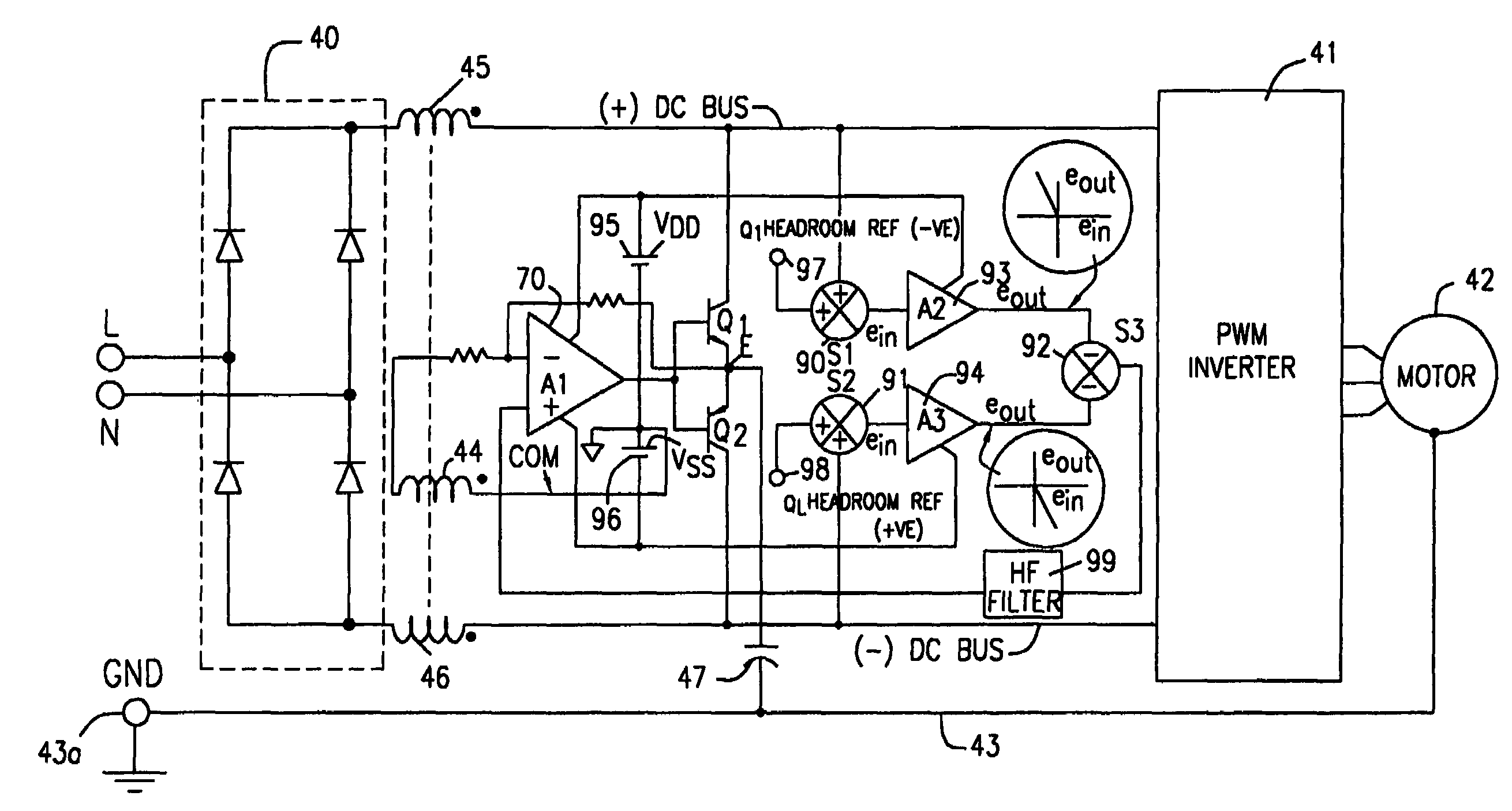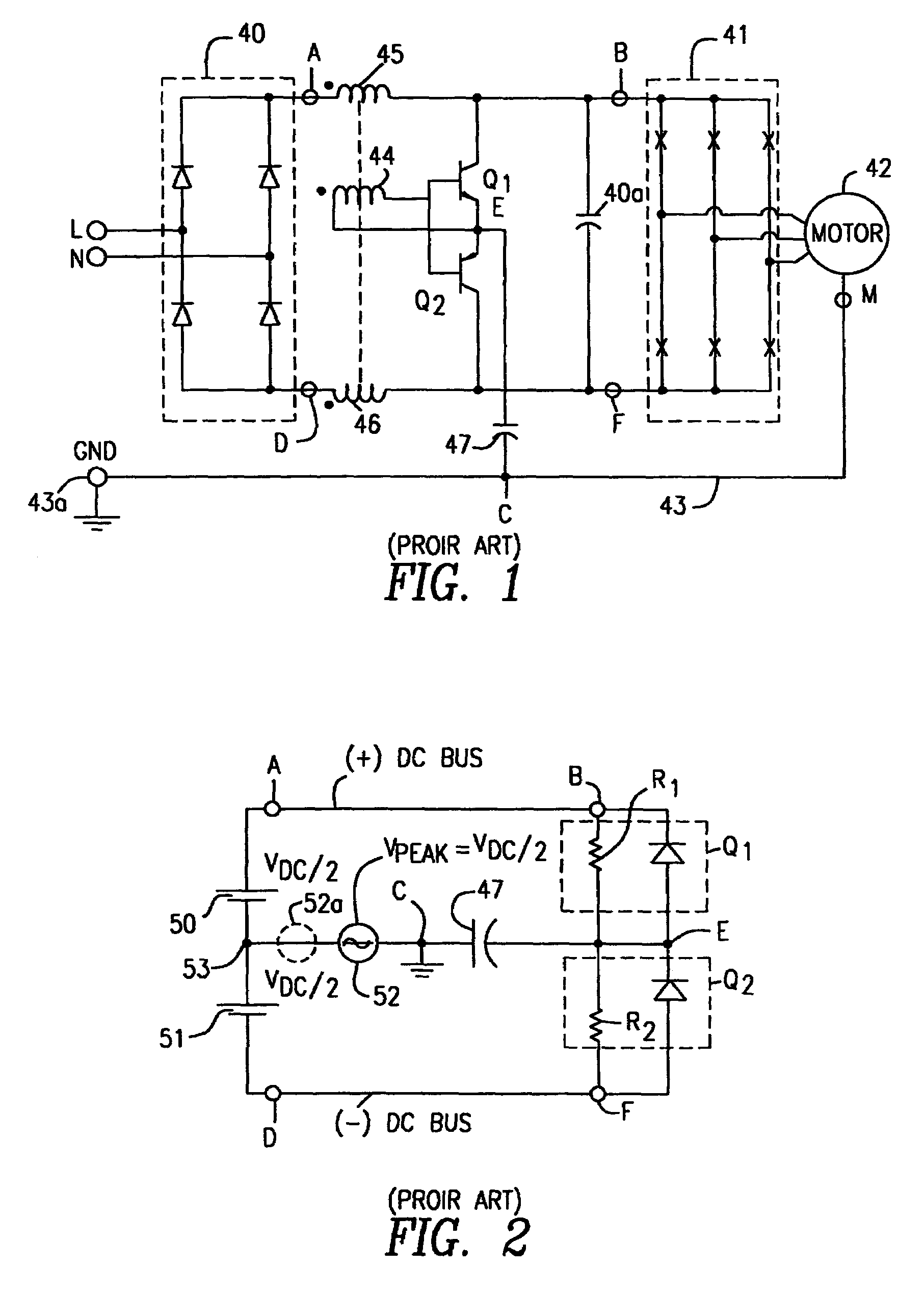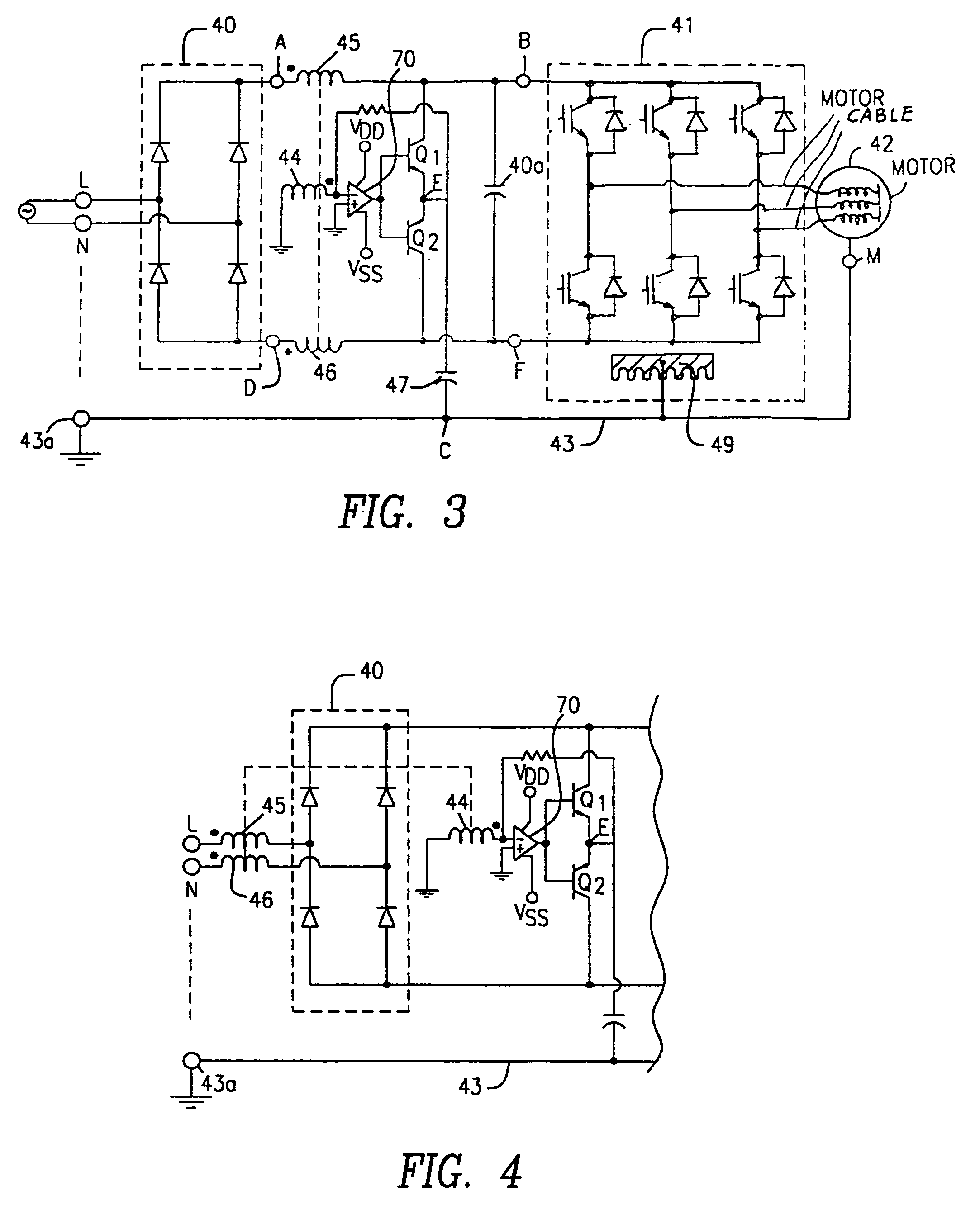Active filter for reduction of common mode current
- Summary
- Abstract
- Description
- Claims
- Application Information
AI Technical Summary
Benefits of technology
Problems solved by technology
Method used
Image
Examples
Embodiment Construction
[0058]FIG. 3 shows an improvement of the circuit of FIG. 1 wherein like numerals designate similar components as is true throughout this specification. FIG. 3 further shows, in schematic fashion, a heat sink 49 which receives the IGBTs (or MOSFETs) of the PWM inverter 41. Heat sink 49, like the housing of motor 42, is connected to ground line 43. In FIG. 3, however, a novel improvement is added which permits a substantial reduction in the size of the transformer 44, 45, 46 without affecting the operation of the active filter function. Thus, in FIG. 3, an operational amplifier 70 is added to the circuit to act as a buffer / amplifier between the secondary of the common mode current sensing transformer 44, 45, 46 and the transistors Q1 and Q2. This permits the size and cost of transformers 44, 45, 46 to be substantially reduced.
[0059]While the primary windings 45 and 46 of the common mode transformer are shown in FIG. 3 at the output of rectifier 40, they may be placed in the a-c input ...
PUM
 Login to View More
Login to View More Abstract
Description
Claims
Application Information
 Login to View More
Login to View More - R&D
- Intellectual Property
- Life Sciences
- Materials
- Tech Scout
- Unparalleled Data Quality
- Higher Quality Content
- 60% Fewer Hallucinations
Browse by: Latest US Patents, China's latest patents, Technical Efficacy Thesaurus, Application Domain, Technology Topic, Popular Technical Reports.
© 2025 PatSnap. All rights reserved.Legal|Privacy policy|Modern Slavery Act Transparency Statement|Sitemap|About US| Contact US: help@patsnap.com



